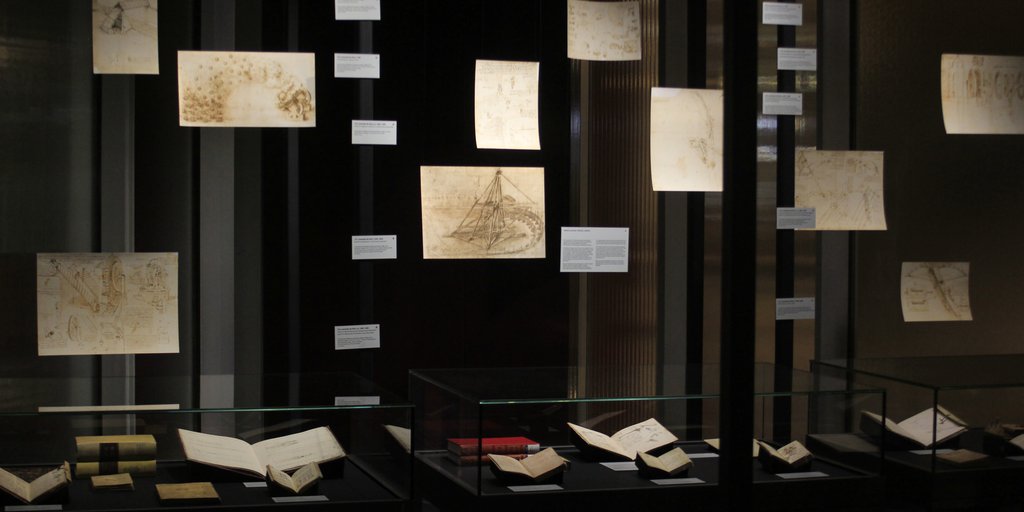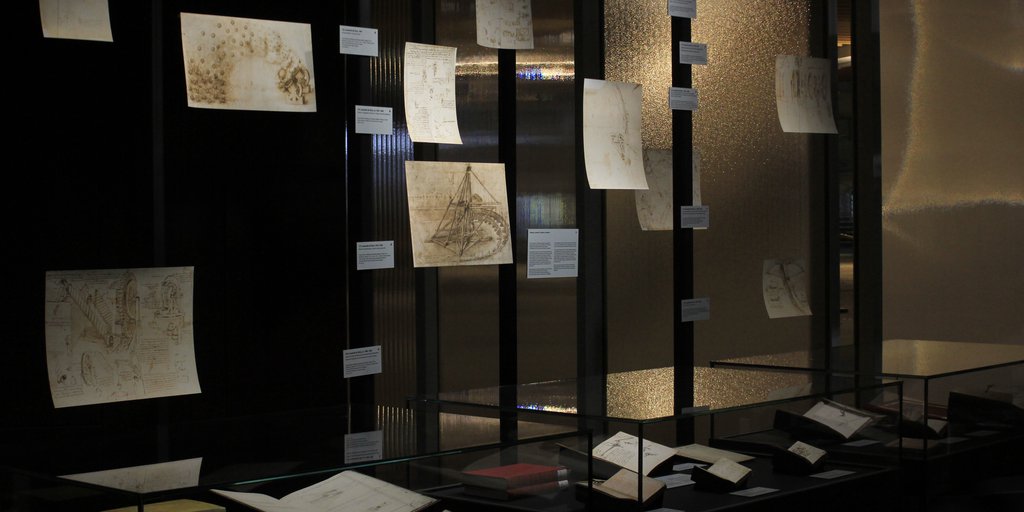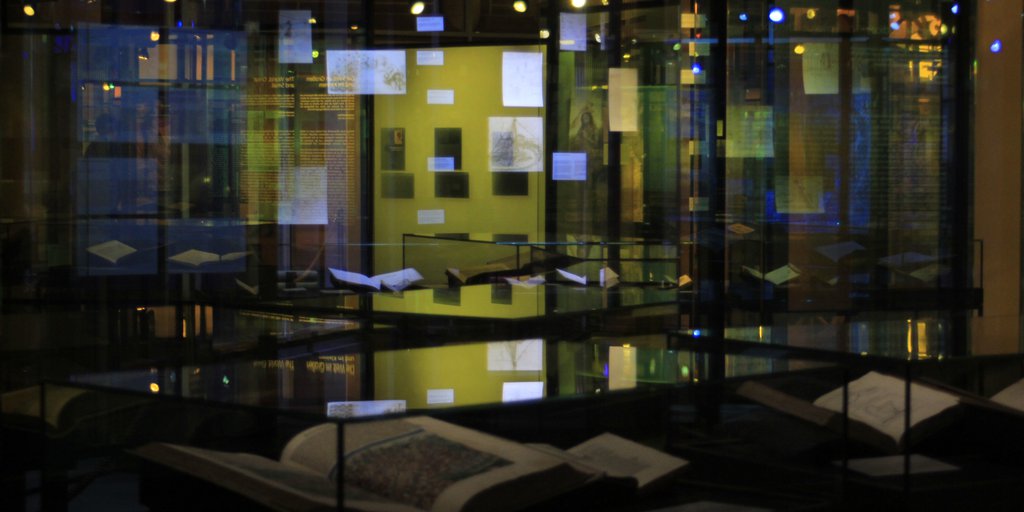
Epilogue: The Codices <
This is a collection without order, compiled from many papers that I have copied here,
hoping to put them in their respective order, according to the subjects they address …
Leonardo da Vinci
Codex Arundel, fol. 1r. Translation: Elizabeth Hughes
Leonardo’s surviving literary estate comprises over 4,000 sheets; a total of 22 volumes of illustrated manuscripts, generally known as codices, still exists today. The material is extremely heterogenous. Alongside pocket-sized sketchbooks with jottings made on the spot purely for his own use, there are large-format clean copies that seem to address an audience. What the volumes have in common is their thematic diversity, and all show traces of continual use and revision. At his death, Leonardo left the volumes to his collaborator and heir Francesco Melzi (1491/92–1567). Melzi’s heirs sold a large part of this legacy to the sculptor Pompeo Leoni (ca. 1533–1608). In 1637 the collector Galeazzo Arconati (before 1592–1649) donated several of these manuscripts to the Biblioteca Ambrosiana in Milan. They ultimately reached Paris as part of Napoleon’s spoils of war where most of them are still kept today—fortunately mostly in their original binding. Other codices took entirely different paths—though under similarly dramatic circumstances.
Codices <
 | 109.
Aerial screw (propeller) 1487–1490 |

This notebook of Leonardo’s did more than any other to establish his popular reputation as a man far ahead of his time. This was due not least to his original ideas about mobility, including aircraft like the one shown here, which is often called—not quite accurately—Leonardo’s “helicopter.” In contrast to the bird-like ornithopter, no models existed for this. It is doubtful whether it was designed to explore the world (99 ■) but at any rate its inventor had some ideas for its possible practical use and specified a diameter of around 4.8 meters along with the materials to be employed: reinforced linen and wire. Made with care from these materials and spun quickly, the “(aerial) screw” (vite aerea) turned the air itself into a thread and rose upward.
References
Bambach, Carmen C. 2019. Leonardo da Vinci Rediscovered. Vol. 2: The Maturing of a Genius 1485–1506. 4 vols. New Haven / London: Yale University Press, 161–178.
Villata, Edoardo. 2015. “Leonardo’s Dreams. Natural Flight, Mechanical Flight and Flights of the Imagination.” In Leonardo da Vinci, 1452–1519. The Design of the World. Exhibition catalogue Palazzo Reale, Milan, 16.4.–19.7.2015, edited by Pietro C. Marani and Maria Teresa Fiorio. Milan: Skira, 303–311.











